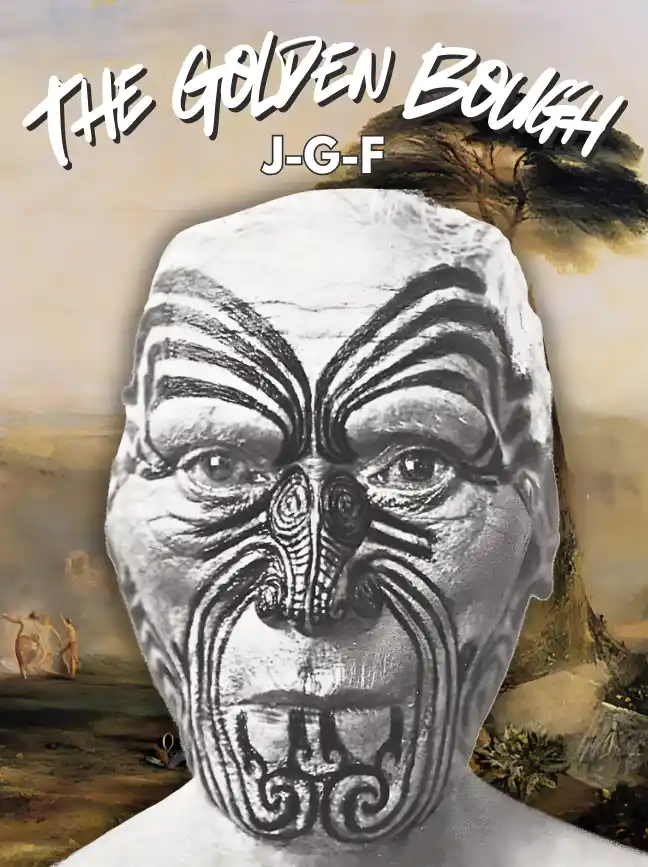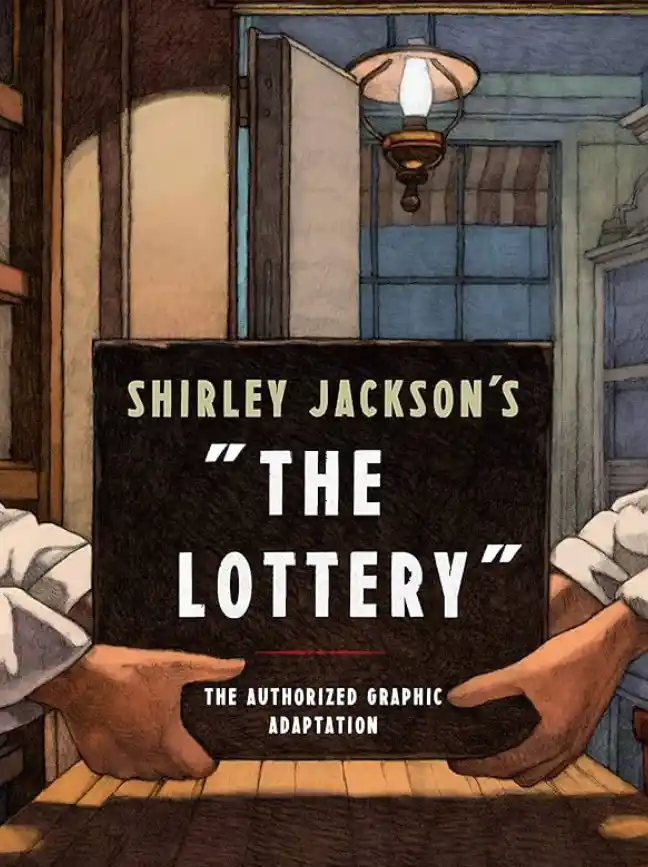CHAPTER 16
DEMETER AND PERSEPHONE
DIONYSUS was not the only Greek deity whose tragic story and ritual appear to reflect the decay and revival of vegetation. In another form and with a different application the old tale reappears in the myth of Demeter and Persephone. Substantially their myth is identical with the Syrian one of Aphrodite (Astarte) and Adonis, the Phrygian one of Cybele and Attis, and the Egyptian one of Isis and Osiris. In the Greek fable, as in its Asiatic and Egyptian counterparts, a goddess mourns the loss of a loved one, who personifies the vegetation, more especially the corn, which dies in winter to revive in spring; only whereas the Oriental imagination figured the loved and lost one as a dead lover or a dead husband lamented by his leman or his wife, Greek fancy embodied the same idea in the tenderer and purer form of a dead daughter bewailed by her sorrowing mother.
Demeter and Persephone as Greek personifications of the decay
and revival of vegetation.
The oldest literary document which narrates the myth of Demeter and Persephone is the beautiful Homeric Hymn to Demeter, which critics assign to the seventh century before our era. The object of the poem is to explain the origin of the Eleusinian mysteries,* and the complete silence of the poet as to Athens and the Athenians, who in after ages took a conspicuous part in the festival, renders it probable that the hymn was composed in the far off time when Eleusis was still a petty independent state, and before the stately procession of the Mysteries had begun to defile, in bright September days, over the low chain of barren rocky hills which divides the flat Eleusinian cornland from the more spacious olive-clad expanse of the Athenian plain.
Be that as it may, the hymn reveals to us the conception which the writer entertained of the character and functions of the two goddesses: their natural shapes stand out sharply enough under the thin veil of poetical imagery. The youthful Persephone, so runs the tale, was gathering roses and
lilies, crocuses and violets, hyacinths and narcissuses in a lush meadow, when the earth gaped and Pluto, lord of the Dead, issuing from the abyss carried her off on his golden car to be his bride and queen in the gloomy subterranean world. Her sorrowing mother Demeter, with her yellow tresses veiled in a dark mourning mantle, sought her over land and sea, and learning from the Sun her daughter’s fate she withdrew in high dudgeon from the gods and took up her abode at Eleusis, where she presented herself to the king’s daughters in the guise of an old woman, sitting sadly under the shadow of an olive tree beside the Maiden’s Well, to which the damsels had come to draw water in bronze pitchers for their father’s house. In her wrath at her bereavement the goddess suffered not the seed to grow in the earth but kept it hidden under ground, and she vowed that never would she set foot on Olympus and never would she let the corn sprout till her lost daughter should be restored to her. Vainly the oxen dragged the ploughs to and fro in the fields; vainly the sower dropped the barley seed in the brown furrows; nothing came up from the parched and crumbling soil. Even the Rarian plain near Eleusis, which was wont to wave with yellow harvests, lay bare and fallow. Mankind would have perished of hunger and the gods would have been robbed of the sacrifices which were their due, if Zeus in alarm had not commanded Pluto to disgorge his prey, to restore his bride Persephone to her mother Demeter. The grim lord of the Dead smiled and obeyed, but before he sent back his queen to the upper air on a golden car, he gave her the seed of a pomegranate to eat, which ensured that she would return to him. But Zeus stipulated that henceforth Persephone should spend two thirds of every year with her mother and the gods in the upper world and one third of the year with her husband in the nether world, from which she was to return year by year when the earth was gay with spring flowers.
Gladly the daughter then returned to the sunshine, gladly her mother received her and fell upon her neck; and in her joy at recovering the lost one Demeter made the corn to sprout from the clods of the ploughed fields and all the broad earth to be heavy with leaves and blossoms. And straightway she went and shewed this happy sight to the princes of Eleusis, to Triptolemus, Eumolpus, Diocles, and to the king Celeus himself, and moreover she revealed to them her sacred rites and mysteries. Blessed, says the poet, is the mortal man who has seen these things, but he who has had no share of them in life will never be happy in death when he has descended into the darkness of the grave. So the two goddesses departed to dwell in
bliss with the gods on Olympus; and the bard ends the hymn with a pious prayer to Demeter and Persephone that they would be pleased to grant him a livelihood in return for his song.
The Homeric Hymn to Demeter.
The rape of Persephone.
The wrath of Demeter.
The return of Persephone.
It has been generally recognised, and indeed it seems scarcely open to doubt, that the main theme which the poet set before himself in composing this hymn was to describe the traditional foundation of the Eleusinian mysteries by the goddess Demeter. The whole poem leads up to the transformation scene in which the bare leafless expanse of the Eleusinian plain is suddenly turned, at the will of the goddess, into a vast sheet of ruddy corn; the beneficent deity takes the princes of Eleusis, shews them what she has done, teaches them her mystic rites, and vanishes with her daughter to heaven. The revelation of the mysteries is the triumphal close of the piece. This conclusion is confirmed by a more minute examination of the poem, which proves that the poet has given, not merely a general account of the foundation of the mysteries, but also in more or less veiled language mythical explanations of the origin of particular rites which we have good reason to believe formed essential features of the festival.
Amongst the rites as to which the poet thus drops significant hints are the preliminary fast of the candidates for initiation, the torchlight procession, the all-night vigil, the sitting of the candidates, veiled and in silence, on stools covered with sheepskins, the use of scurrilous language, the breaking of ribald jests, and the solemn communion with the divinity by participation in a draught of barley-water from a holy chalice.
The aim of the Homeric Hymn to Demeter is to explain the
traditional foundation of the Eleusinian mysteries by Demeter.
But there is yet another and a deeper secret of the mysteries which the author of the poem appears to have divulged under cover of his narrative.
He tells us how, as soon as she had transformed the barren brown expanse of the Eleusinian plain into a field of golden grain, she gladdened the eyes of Triptolemus and the other Eleusinian princes by shewing them the growing or standing corn. When we compare this part of the story with the statement of a Christian writer of the second century, Hippolytus, that the very heart of the mysteries consisted in shewing to the initiated a reaped ear of corn, we can hardly doubt that the poet of the hymn was well acquainted with this solemn rite, and that he deliberately intended to explain its origin in precisely the same way as he explained other rites of the mysteries, namely by representing Demeter as having set the example of performing the ceremony in her own person. Thus myth and ritual mutually explain and confirm each other. The poet of the seventh century before our era gives us the myth—he could not without sacrilege have revealed the ritual: the Christian father reveals the ritual, and his revelation accords perfectly with the veiled hint of the old poet. On the whole, then, we may, with many modern scholars, confidently accept the statement of the learned Christian father Clement of Alexandria, that the myth of Demeter and Persephone was acted as a sacred drama in the mysteries of Eleusis.
Revelation of a reaped ear of corn the crowning act of the
mysteries.
But if the myth was acted as a part, perhaps as the principal part, of the most famous and solemn religious rites of ancient Greece, we have still to enquire, What was, after all, stripped of later accretions, the original kernel of the myth which appears to later ages surrounded and transfigured by an aureole of awe and mystery, lit up by some of the most brilliant rays of Grecian literature and art? If we follow the indications given by our oldest literary authority on the subject, the author of the Homeric Hymn to Demeter, the riddle is not hard to read; the figures of the two goddesses, the mother and the daughter, resolve themselves into personifications of the corn. At least this appears to be fairly certain for the daughter Persephone.
The goddess who spends three or, according to another version of the myth, six months of every year with the dead under ground and the remainder of the year with the living above ground; in whose absence the barley seed is hidden in the earth and the fields lie bare and fallow; on whose return in
spring to the upper world the corn shoots up from the clods and the earth is heavy with leaves and blossoms—this goddess can surely be nothing else than a mythical embodiment of the vegetation, and particularly of the corn, which is buried under the soil for some months of every winter and comes to life again, as from the grave, in the sprouting cornstalks and the opening flowers and foliage of every spring. No other reasonable and probable explanation of Persephone seems possible. And if the daughter goddess was a personification of the young corn of the present year, may not the mother goddess be a personification of the old corn of last year, which has given birth to the new crops?
Demeter and Persephone personifications of the
Persephone the seed sown in autumn and sprouting in spring.
Demeter the old corn of last year.
The Sicilians celebrated the festival of Demeter at the beginning of the sowing, and the festival of Persephone at the harvest. This proves that they associated, if they did not identify, the Mother Goddess with the seed-corn and the Daughter Goddess with the ripe ears.
Could any association or identification be more easy and obvious to people who personified the processes of nature under the form of anthropomorphic deities? As the seed brings forth the ripe ear, so the Corn Mother Demeter gave birth to the Corn Daughter Persephone. It is true that difficulties arise when we attempt to analyse this seemingly simple conception. How, for example, are we to divide exactly the two persons of the divinity? At what precise moment does the seed cease to be the Corn Mother and begin to burgeon out into the Corn Daughter? And how far can we identify the material substance of the barley and wheat with the divine bodies of the Two Goddesses? Questions of this sort probably gave little concern to the sturdy swains who ploughed, sowed, and reaped the fat fields of Sicily. We cannot imagine that their night’s rest was disturbed by uneasy meditations on these knotty problems. It would hardly be strange if the muzzy mind of the Sicilian bumpkin, who looked with blind devotion to the Two Goddesses for his daily bread, totally failed to distinguish Demeter from the seed and Persephone from the ripe sheaves, and if he accepted implicitly the doctrine of the real presence of the divinities in the corn
without discriminating too curiously between the material and the spiritual properties of the barley or the wheat. And if he had been closely questioned by a rigid logician as to the exact distinction to be drawn between the two persons of the godhead who together represented for him the annual vicissitudes of the cereals, Hodge might have scratched his head and confessed that it puzzled him to say where precisely, the one goddess ended and the other began, or why the seed buried in the ground should figure at one time as the dead daughter Persephone descending into the nether world, and at another as the living Mother Demeter about to give birth to next year’s crop. Theological subtleties like these have posed longer heads than are commonly to be found on bucolic shoulders.
Difficulty of distinguishing between Demeter and Persephone as
personifications of different aspects of the corn.
How deeply implanted in the mind of the ancient Greeks was this faith in Demeter as goddess of the corn may be judged by the circumstance that the faith actually persisted among their Christian descendants at her old sanctuary of Eleusis down to the beginning of the nineteenth century. For when the English traveller Dodwell revisited Eleusis, the inhabitants lamented to him the loss of a colossal image of Demeter, which was carried off by Clarke in 1802 and presented to the University of Cambridge, where it still remains.* ‘In my first journey to Greece’, says Dodwell, ‘this protecting deity was in its full glory, situated in the centre of a threshing- floor, amongst the ruins of her temple. The villagers were impressed with a persuasion that their rich harvests were the effect of her bounty, and since her removal, their abundance, as they assured me, has disappeared.’ Thus we see the Corn Goddess Demeter standing on the threshing-floor of Eleusis and dispensing corn to her worshippers in the nineteenth century of the Christian era, precisely as her image stood and dispensed corn to her worshippers on the threshing-floor of Cos in the days of Theocritus. And just as the people of Eleusis last century attributed the diminution of their harvests to the loss of the image of Demeter, so in antiquity the Sicilians, a corn-growing people devoted to the worship of the two Corn Goddesses, lamented that the crops of many towns had perished because the unscrupulous Roman governor Verres had impiously carried off the image
of Demeter from her famous temple at Henna. Could we ask for a clearer proof that Demeter was indeed the goddess of the corn than this belief, held by the Greeks down to modern times, that the corn-crops depended on her presence and bounty and perished when her image was removed?
Belief in ancient and modern times that the corn-crops depend
on possession of an image of Demeter.






